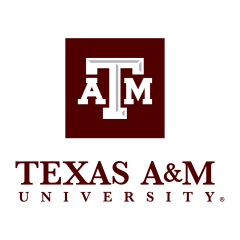In today's competitive higher education landscape, providing exceptional student support is not just an advantage—it’s a necessity.
One of the most effective ways to enhance support services is by promoting cross-campus alignment and collaboration. With a unified sense of purpose to create a framework that helps drive student success, processes and decision-making are streamlined to drive efficiency and improve experience.
Texas A&M University knows a lot about this, having successfully aligned its financial and enrollment support services to launch the Aggie One Stop. By integrating support for financial aid, student business services, and other enrollment offices, Texas A&M One Stop staff can now address multiple student needs in one interaction. This resolves immediate concerns and supports long-term student success.
They shared their experience of working towards cross-campus alignment—and the impact it has had on staff and students—at our inaugural Flywire Fusion U.S. client conference this past fall. Here are four critical steps in their journey that institutions can take to help better forge collaboration across various campus departments.
1. Establish a cross-departmental working group with shared goals that foster open communication and collaboration.
All too often, university departments work independently of each other, using disjointed processes, and communicating only when issues need to be resolved. By creating a working group and teaming up to establish a common language, perspective, and purpose, alignment initiatives can help improve communication and break down these silos.
For instance, Aggie One Stop Director Erin Porter described how, when she was heading Financial Aid, her team had worked to foster relationships with direct contacts in Student Business Services and other teams, so that they could help students without having to explain their cases over and over again. Launching the Aggie One Stop simply formalized this practice, putting structure around what they had been doing for years.
2. Build trust by keeping stakeholders informed and working together to ensure smooth transitions
Regular and consistent communication was, and still is, critical to the success of the Aggie One Stop at Texas A&M. Kathryn Holder, Assistant Director of Student Business Services, explained how important it was to “be very intentional with communication.” By providing regular updates for key stakeholders across the University, they are able to keep departments better informed and engaged, particularly around process changes and system updates. The trust these frequent communications build now carries over into ‘business as usual’, which further solidifies the culture of collaboration between teams.
3. Collaborate to improve efficiency by streamlining processes and integrating systems.
A common student complaint is disjointed support services, which require multiple calls or office visits to resolve issues—wasting time and creating frustration. Texas A&M addressed this by collaborating to streamline processes, adopting unified tools, integrating systems, and improving workflows.
As Porter noted, when all departments can see the full student perspective, they can provide more effective support and improve efficiency. For instance, if a student owes a balance, One Stop staff can explore financial aid options, review degree plans, and advocate for completion grants or emergency aid. “Students [only] have one place to call,” she said. “We can help a student pay an outstanding bill to remove a registration hold, but we can also help them register for classes.”
By streamlining processes and automating highly manual tasks across several departments, Texas A&M has seen a dramatic improvement in operational efficiency. Staff now have the time to more proactively help students with more complex issues. In addition, students are now able to more easily access and benefit from more unified and personalized support.
When departments align and collaborate, they can better identify trends, share insights, and innovate to meet students’ evolving expectations. This unified approach speeds up decision-making and simplifies the implementation of new solutions—an approach Texas A&M has embraced.
Using the recent changes around transcript withholding as an example, Porter described how her team “works collaboratively with Student Business Services on issues or pain points, challenges, things that [they] identify, but also things that [other] team[s] need to tackle.”
Finding the right partner to walk with you through this process is critical.

4. Partner with forward-thinking vendors to support alignment efforts and drive continuous innovation.
Ensuring institution-wide alignment often requires more than just internal coordination. Technology is key to driving efficiency for both staff and students.
According to Jennifer Lightfoot, Executive Director for Student Business Services, implementing Flywire was a critical step for Texas A&M University, which reduced call volumes by 34% almost immediately. Porter concurred, crediting Flywire with “setting [them] up for success when [One Stop] opened because [they] were starting without all the most unnecessary contacts.”
As Lightfoot’s team introduced additional Flywire solutions, they observed even more efficiencies. For example, having gone live with Flywire 529 disbursements, Lightfoot found that “about 50% of [529 payments are now] rolling through a digital, automated process; [there is] no more snail mail, no more trying to figure out where those payments are from.” This solution has not only helped eliminate manual check processing, but also speeds reconciliation, enabling staff to proactively devote saved time to those students with unique circumstances.
In addition to a better overall experience, collaborating with forward-thinking vendors helps institutions accelerate transformation, foster sustainable growth, and remain agile amid shifting demands in higher education. When institutions partner with innovative companies that offer cutting-edge solutions, they can automate processes, enhance the student experience, and continuously adapt to evolving needs.
Lightfoot concluded, “Finding the right partner to walk with you through this process is critical. [You need] people to listen to you, understand [your] needs, actually take innovation a step further [and] be forward-thinking [about] what the next set of students look like.”
Conclusion: Take steps today to better drive student success across campus and what can be achieved
By prioritizing cross-campus alignment, universities and colleges will be better positioned to provide exceptional student support. By taking steps to foster collaboration, improve communication, and implement student-centric solutions, institutions can enhance the student experience, drive operational efficiency, and prepare for future challenges.
The Texas A&M University journey offers a compelling roadmap for institutions striving to transform their support services, improve efficiencies, and deliver outstanding value to students. As Erin Porter advised, “Do it because it will open up much more potential for what could be accomplished. If you really examine what you're doing, you could make it so much more efficient.”
More to explore:
- Find out what to expect from Flywire Fusion 2025 and register now to avoid missing out
- Learn about Texas A&M University’s journey to cashless payments
- Read the takeaways from Flywire Fusion 2024
- Learn how the Tennessee State Bursar and CIO are successfully driving cross-campus collaboration to improve student financial success

